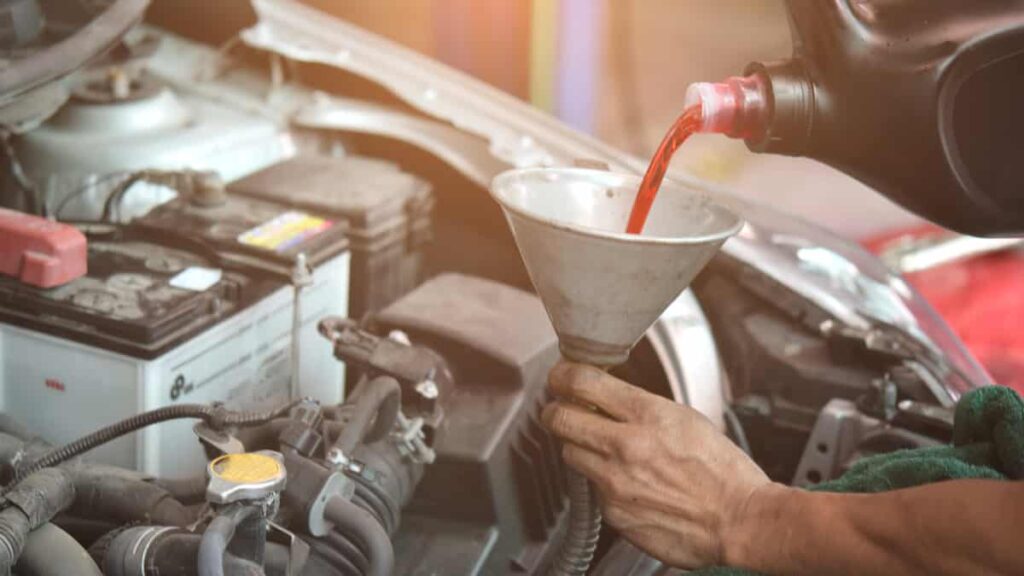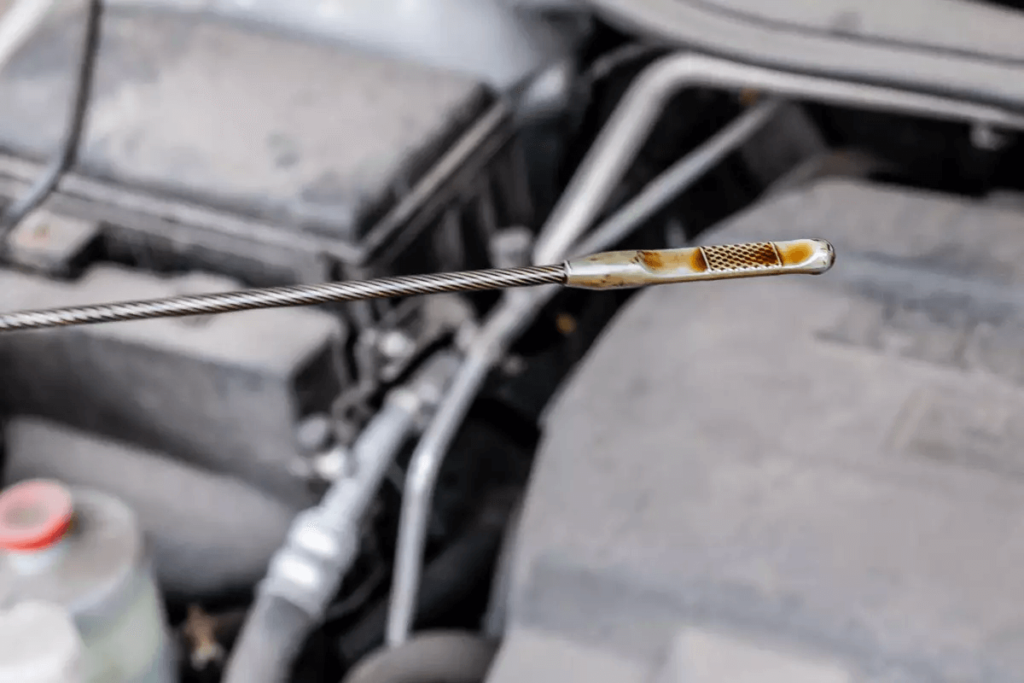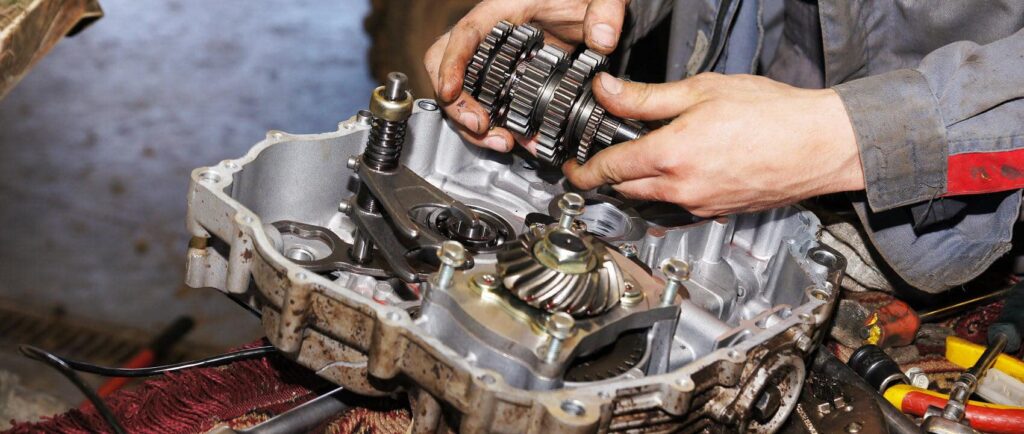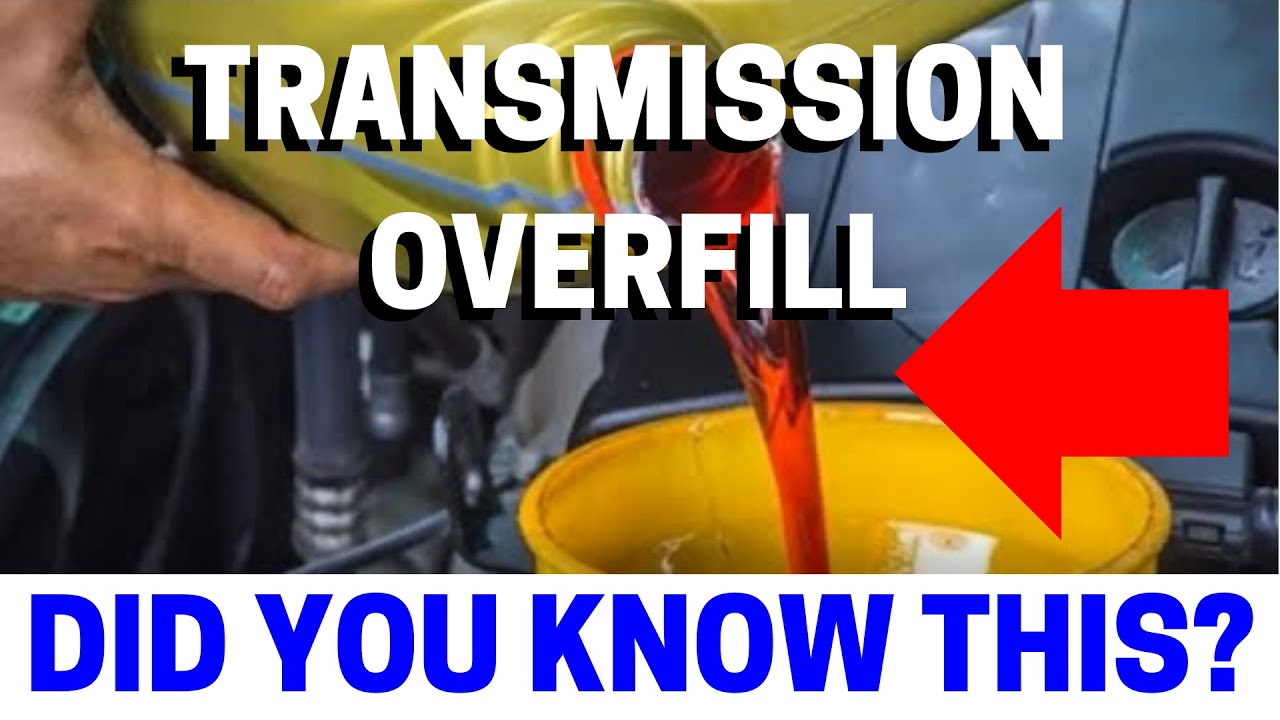Dive into the dangers lurking under your hood – the silent chaos caused by too much transmission fluid. Discover the signs that scream ‘too much of a good thing’ and how to strike the perfect balance for a smooth, gear-shifting experience. Let’s shift gears on transmission care!
What Is Transmission Fluid?
Transmission fluid is a specialized lubricant used in automatic and manual transmissions of vehicles. It serves multiple purposes within the transmission system.
Primarily, transmission fluid acts as a lubricant, reducing friction between the moving components of the transmission. This helps to prevent wear and tear on the gears, bearings, and other internal parts, ensuring smooth operation and longevity of the transmission.
In addition to lubrication, transmission fluid also plays a crucial role in cooling the transmission. The fluid absorbs heat generated by friction and heat dissipation within the transmission, helping to maintain optimal operating temperatures.
Furthermore, transmission fluid acts as a hydraulic fluid, facilitating the transfer of power within the transmission system. It enables the smooth shifting of gears in automatic transmissions and provides the necessary pressure for engaging the clutch in manual transmissions.
What are the Consequences of Overfilling Transmission Fluid?

Overfilling the transmission fluid can lead to various negative outcomes. Here are the potential consequences associated with overfilling:
Transmission Failure
Overfilling the transmission fluid can have severe consequences, such as transmission failure. When the fluid level is excessively high, it exerts excessive pressure on the seals and gaskets within the transmission—the increased pressure cause these crucial components to develop leaks or even break altogether. As a result, the transmission loses hydraulic power, leading to transmission failure.
Increased Wear on Transmission Components
Overfilling the transmission fluid places undue stress on the transmission gears and components. The excess fluid creates additional resistance and makes it more difficult for the gears to engage properly. This added strain can accelerate wear and tear on the gears, causing premature damage such as stripped teeth or even gear breakage.
Inadequate Lubrication and Foaming
Excessive transmission fluid can lead to inadequate lubrication and the occurrence of foaming. When the fluid level is too high, the moving gears and components may not receive sufficient lubrication. Inadequate lubrication increases friction and heat generation, which can result in damage to the gears and other transmission components over time.
Additionally, the excess fluid can foam, further compromising the lubrication process. Foam does not provide the same level of protection and smooth operation as properly lubricated fluid, increasing the risk of wear, overheating, and potential failure of the transmission system.
Excessive Pressure Buildup
Overfilling the transmission fluid leads to the buildup of excessive pressure within the transmission system. The excess fluid creates a higher-than-normal hydraulic pressure, which can strain the seals and gaskets. The increased pressure can cause these components to fail, resulting in fluid leaks and potential damage to other parts of the transmission.
Related: Transmission Leak Repair Cost | 7 Signs & Steps To Fix It
Symptoms of Overfilled Transmission Fluid
Several symptoms may manifest when the transmission fluid is overfilled, indicating the issue. Here are the common symptoms of an overfilled transmission fluid:
1. High Fluid Level on Dipstick

A clear indication that you have overfilled your transmission fluid is when you check the dipstick and notice that the fluid level is above the recommended range. The dipstick is designed to allow you to monitor the fluid level, and if it exceeds the proper range, it signifies an overfilled condition. It’s important to note that you should check the fluid level when the engine is at operating temperature to obtain an accurate reading.
2. Trouble Shifting Gears

An overfilled transmission fluid can lead to difficulties when shifting gears. Whether you have an automatic or manual transmission, you may experience challenges in engaging or disengaging gears smoothly. You might notice harsh or delayed shifts in automatic transmissions, where the gear changes feel rough and require more force.
Similarly, in manual transmissions, you may encounter resistance when trying to move the shifter into the desired gear. This lack of smooth shifting is a result of the excess fluid occupying space within the transmission system, making it harder for the gears and synchronizers to operate as intended.
3. Engine Overheating
It may seem counterintuitive, but an overfilled transmission fluid can contribute to engine overheating. The excess fluid disrupts the cooling process within the transmission system, reducing its ability to dissipate heat effectively. As a result, the heat generated during operation can transfer to the engine, causing it to overheat.
This can lead to a variety of issues, including potential damage to engine components and an increased risk of engine failure. If you notice your engine temperature rising abnormally or a burning smell coming from under the hood, it could be a sign of engine overheating due to an overfilled transmission.
4. Leaking Fluid

An overfilled transmission can result in excessive pressure build-up within the system. The heightened pressure can put a strain on the seals and gaskets, leading to cracks or failures. As a consequence, transmission fluid leaks may occur, evidenced by visible fluid puddles beneath the vehicle or stains on the ground where it is parked. While the leakage may alleviate the fluid overfilling over time, it is not a permanent solution.
5. Odd Noises
One of the telltale signs of an overfilled transmission is the presence of unusual noises. Although an overfilled transmission may not generate the most obnoxious sounds, you may hear distinct noises that indicate something is amiss.
These noises can manifest as whirring, grinding, whining, or humming sounds coming from the transmission area. The abnormal noises suggest that the components within the transmission are not operating optimally due to the excessive fluid level.
6. Slipping Transmission
Excessive fluid in the transmission puts added pressure on its internal components. As a result, one common symptom is a slipping transmission. In an automatic transmission, you may experience brief moments of power loss or a sensation of the transmission struggling to engage gears smoothly.
A manual transmission, on the other hand, may disengage from the intended gear, requiring manual correction to re-engage properly. Often, a grinding noise accompanies these instances of slipping.
7. Part Pitting

Part pitting can occur in the worst-case scenario of leaving an excessive amount of transmission fluid in the system for an extended period. This refers to the development of damage or corrosion on various transmission components, including rollers and gears.
Part pitting typically happens due to the presence of excessive fluid and can lead to significant transmission failure. If part pitting is identified, it may necessitate a comprehensive transmission rebuild or replacement to restore the functionality and reliability of the transmission system.
Related: Metal Shavings In Transmission Fluid: Causes & What It Means
8. Foaming or Bubbling Fluid
Excessive fluid can cause the transmission fluid to foam or bubble. You may notice a frothy appearance when checking the fluid level or find air bubbles in the transmission dipstick tube. Foaming indicates that the fluid is not able to provide proper lubrication and cooling, potentially leading to wear and overheating issues.
How To Fix An Overfill
If you have overfilled your transmission fluid, there are steps you can take to rectify the situation. Here’s a guide on how to fix an overfilled transmission:
- Safety First: Ensure that the engine is turned off and the vehicle is parked on a level surface. Engage the parking brake to prevent any unintended movement.
- Locate the Transmission Fluid Drain Plug: Consult your vehicle’s manual to find the location of the transmission fluid drain plug. It is typically located on the transmission pan, which is located underneath the transmission. Some vehicles may require the removal of a protective cover to access the drain plug.
- Prepare Drain Pan: Place a suitable drain pan beneath the drain plug to catch the excess fluid that will be drained.
- Loosen the Drain Plug: Use a wrench or socket to loosen the drain plug. Slowly loosen it until fluid begins to trickle out. Take caution, as the fluid may still be hot.
- Drain Excess Fluid: Allow the excess fluid to drain into the pan until it reaches the proper fluid level on the dipstick. It is advisable to drain the fluid in small increments, periodically checking the fluid level to avoid draining too much.
- Tighten the Drain Plug: Once the excess fluid has been drained and the fluid level is within the recommended range, tighten the drain plug securely.
- Check Fluid Level: Start the engine and allow it to reach operating temperature. With the engine running, check the transmission fluid level using the dipstick. Add or remove fluid as necessary to ensure it falls within the recommended range. Be cautious not to overfill or underfill the transmission.
How Much Transmission Fluid Does a Car Hold?
The amount of transmission fluid a car can hold varies depending on the make and model of the vehicle. The capacity is determined by factors such as the type of transmission (automatic or manual), the transmission’s size, and the vehicle’s specific design.
For automatic transmissions, the fluid capacity can range from around 4 to 16 quarts (3.8 to 15.1 liters) or more. Larger vehicles like trucks or SUVs tend to have larger transmissions, requiring more fluid.
Manual transmissions generally have a smaller fluid capacity compared to automatic transmissions. The capacity can range from approximately 2 to 8 quarts (1.9 to 7.6 liters) or less, depending on the vehicle.
To find the specific fluid capacity for your car, it’s best to refer to the owner’s manual or consult the manufacturer’s specifications. These documents will provide accurate information regarding the recommended fluid type and your vehicle’s capacity.
FAQs
Can overfilling transmission fluid cause permanent damage to the transmission?
Overfilling transmission fluid can potentially cause permanent damage to the transmission. The excessive fluid level can put undue pressure on the seals, gaskets, and internal components of the transmission, leading to leaks, failures, and accelerated wear. It is essential to address the overfilling issue promptly to minimize the risk of irreversible damage.
How can I determine if my transmission fluid is overfilled?
The most accurate way to determine if your transmission fluid is overfilled is by checking the fluid level on the transmission dipstick. Consult your vehicle’s manual for the correct procedure. Generally, if the fluid level is above the recommended range on the dipstick when the engine is at operating temperature, it indicates an overfilled condition.
How often should you change the transmission fluid?
Changing your transmission fluid every 30,000 miles or every two years is typically recommended, whichever comes first. However, if you frequently drive in stop-and-go traffic or tow heavy loads, you may need to change it more often. You can check your owner’s manual for specific recommendations.
Can too much transmission fluid put your car in limp mode?
Too much transmission fluid can put your car in limp mode. This is because the excess fluid can cause the transmission to overheat and fail. If this happens, the car will be unable to shift gears properly, which will limit its speed and performance.
What are the potential consequences of driving with an overfilled transmission?
Driving with an overfilled transmission can lead to various problems. These include transmission slipping, difficulty shifting gears, overheating of the transmission and engine, transmission fluid leaks, unusual noises, and potential damage to transmission components. Continued driving with an overfilled transmission can worsen these issues and result in more extensive and costly repairs.
Conclusion
In conclusion, overfilling the transmission fluid can have detrimental effects on your vehicle’s transmission system. Maintaining the proper fluid level is crucial to ensure smooth operation, proper lubrication, and optimal performance. If you suspect that your transmission fluid is overfilled, it is important to address the issue promptly to prevent potential damage and costly repairs.




